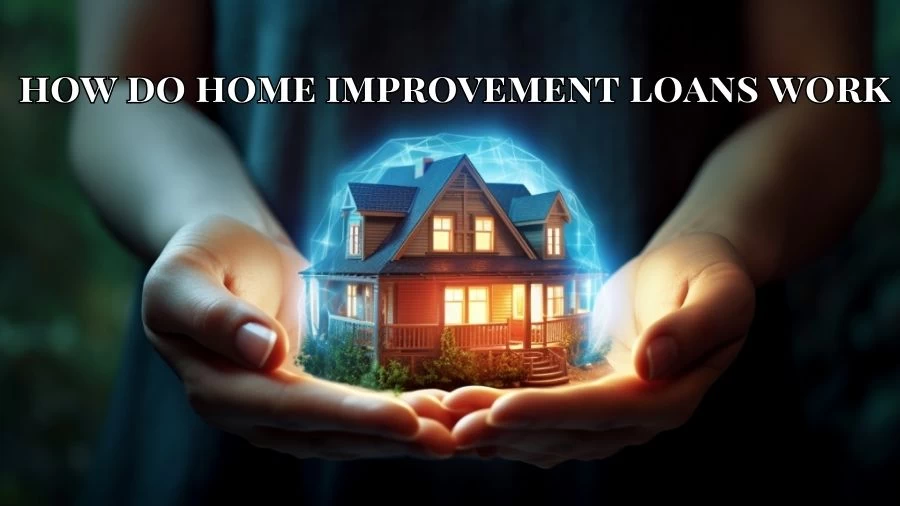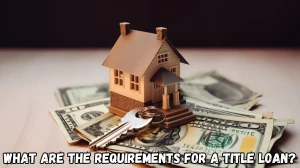
How Do Home Improvement Loans Work? What Are Home Improvement Loans?
Home improvement loans are financing options that offer a fixed sum with a set interest rate for renovating your home, requiring regular payments to cover the borrowed amount and interest.
by Sai V
Updated Aug 28, 2023
On This Page
- How Do Home Improvement Loans Work?
- What Are Home Improvement Loans?
- Zero Interest Home Improvement Loans
- How to Get Home Improvement Loans?
- How Long Are Home Improvement Loans?
- How Much Are Home Improvement Loans?
- Home Improvement Loans Rates
- Steps to Apply for a Home Regeneration Loan
- What Are the Advantages and Disadvantages of Home Improvement Loans?
How Do Home Improvement Loans Work?
Opting for either a secured or an unsecured route, the fundamental operation of home improvement loans remains consistent.Essentially, you receive a lump sum amount, which you then gradually pay off over a predetermined duration, coupled with a fixed interest rate. These funds become your financial tool to cover an array of expenses such as contractor fees, permits, materials, equipment, and the necessary labor to bring your home improvement vision to life.
This financial support can be directed towards a singular substantial project or distributed among several smaller ones, depending on your preferences.Regardless of the timeline it takes to wrap up your home enhancement endeavors, the initiation of your responsibility begins right away. You'll commence making monthly payments that encompass both the borrowed amount and the applicable interest rate.
The precise monthly installment hinges on the sum you've borrowed and the fixed interest rate agreed upon. As you decide on a loan option, it's imperative to conduct a thorough assessment of your financial capacity to comfortably manage these recurring monthly payments. Additionally, it's prudent to factor in any unforeseen expenses that might emerge during the course of the renovation process. This comprehensive financial planning ensures that your home improvement journey progresses smoothly.
What Are Home Improvement Loans?
A Home Improvement Loan is a term lacking an official legal delineation, yet it pertains to financial arrangements undertaken for the purpose of advancing home improvement ventures. This umbrella term encompasses a variety of financing alternatives utilized as Home Improvement Loans, notably encompassing personal loans, home equity loans, and home equity lines of credit (HELOCs).
Many homeowners find their aspirations of renovating their homes dashed by the often daunting price tags associated with such projects. While some individuals might have the means to cover minor repairs through personal funds, larger-scale upgrades can quickly accumulate expenses reaching thousands of dollars, necessitating alternative financial solutions. This is where the concept of home improvement loans becomes invaluable.
Contrary to their name, home improvement loans encompass a diverse array of loan types and lines of credit. These financial tools serve as the means to finance a wide spectrum of home repair endeavors, spanning from addressing structural issues to revamping entire rooms or even implementing energy-efficient and accessibility enhancements.
Zero Interest Home Improvement Loans
Zero-interest home improvement loans are financial arrangements that enable individuals to secure funds for the purpose of completing renovations and repairs on their residences. Unlike conventional loan structures, these unique loans do not involve the imposition of any interest charges, provided that borrowers adhere to the contractual obligations specified.
These interest-free loans for home improvement are typically facilitated by non-profit organizations and governmental bodies at the state and local levels. The primary goal of such entities is to extend assistance to individuals in need rather than generating revenue through interest payments.
It's important to note that the availability of these zero-interest loans is more restricted compared to traditional home remodeling loans due to their specific eligibility criteria and targeted nature, as they are intended to aid those who meet particular requirements and demonstrate a genuine necessity for financial support in enhancing their living spaces.
How to Get Home Improvement Loans?
When it comes to securing funding for your home improvement projects, following a structured approach can make the process much smoother. Here's a step-by-step guide to help you navigate the process of obtaining a home improvement loan.
Explore Diverse Loan Options:
Start by delving into the various types of home improvement loans available in the market. There are four primary options to consider, each with its own advantages and disadvantages:
- Personal Loans: These loans offer fixed interest rates and consistent monthly payments, making them ideal for those who prefer a predictable budget. Depending on the lender, you could access up to $100,000 with a repayment window of up to seven years.
- Credit Cards: For ongoing home improvement projects with flexible budgets, credit cards provide a "spend-as-you-go" approach. However, bear in mind that credit cards generally come with higher interest rates than other loan types. Clearing the balance each month is recommended to avoid accruing high interest charges.
- Home Equity Loans: Leveraging your home equity, you can secure a lump sum loan amounting to up to 85 percent of your property's equity. These loans typically offer lower interest rates due to their secured nature. However, remember that your property is used as collateral, entailing a risk of foreclosure in case of default.
- Home Equity Lines of Credit (HELOCs): Similar to credit cards, HELOCs utilize your home's equity as collateral. They offer flexibility for projects with varying budgets. During the draw period, you usually make interest-only payments, keeping initial costs in check.
Compare Interest Rates and Terms:
- Once you've identified the suitable loan type, it's time to conduct a thorough comparison of various lenders. Key factors to consider include interest rates, borrower prerequisites, associated fees, and loan durations. These elements collectively influence the overall cost of your loan.
- Additionally, ensure that the maximum loan amount aligns with your project's financial requirements. For extensive renovations, a credit card might not provide sufficient funds, making a home equity loan a more prudent choice. Conversely, smaller projects could be accommodated using an existing credit card.
Assemble Essential Documentation:
Prepare the necessary documents that lenders commonly require. This generally includes:
- Valid Identification: A driver's license or passport serves as a valid ID.
- Proof of Income: Present your pay stubs or tax returns as evidence of your income.
- Proof of Residence: Utility bills or bank statements bearing your address fulfill this requirement.
Also, remember that your current debts, housing payments, and total income play a role in determining the loan rates and terms you're eligible for.
Get Prequalified:
- Opt for lenders offering a prequalification process. This preliminary step provides an estimate of your approval likelihood, anticipated interest rate, and the overall loan cost. Notably, prequalification involves a "soft" credit inquiry, preventing any negative impact on your credit score.
- Feel free to seek prequalification from multiple lenders simultaneously, facilitating an easy comparison. This way, you can ascertain the loan amount, associated costs, and feasibility of covering your project without committing to official paperwork.
Complete the Application Process:
- Following your lender comparisons, initiate the application process with your chosen lender. This might necessitate additional documentation or information, so stay informed about the lender's specific requirements.
- Subsequently, upon approval, the funds from your home improvement loan will be deposited into your designated bank account. With these funds at your disposal, you can begin your home improvement endeavors and initiate repayment through regular monthly installments.
How Long Are Home Improvement Loans?
A home improvement personal loan serves as a dedicated financial resource for renovating your residence or addressing unforeseen repairs. Typically falling under the umbrella of personal loans, these provide a structured approach to managing significant expenses. Besides home upgrades, personal loans are adaptable for funding occasions like weddings, consolidating debts, covering funeral costs, facilitating travel, and more.
Regarding repayment, personal loans operate through fixed installment payments spread over a designated timeframe known as the loan's term. This period can range from as short as six months to as long as seven years. Opting for a shorter term translates to higher monthly payments but lower overall interest costs, making it advisable to select the most manageable term length.
Once your home improvement personal loan is approved, the funds are generally transferred directly to your checking account. During repayment, it's crucial to be mindful of potential penalties for late payments or early settlement. The monthly payment encompasses both the principal amount and interest. As you successfully complete your personal loan payments, the credit line associated with the loan is closed, concluding your access to those funds.
How Much Are Home Improvement Loans?
Home improvement loans encompass a spectrum of interest rates, spanning from 6% to 35.99%. The determination of your specific interest rate on such a loan primarily hinges on aspects such as your credit score, credit history, and debt-to-income ratio. To provide context, the average interest rate for personal loans stands at approximately 21.59%.
It's important to bear in mind that these rates can fluctuate based on a variety of factors including the lending institution, your individual financial profile, prevailing market conditions, and other pertinent considerations. If you're contemplating obtaining a loan for the purpose of home improvement or any other goal, it's prudent to engage in a thorough comparison of offers from multiple lenders. This approach ensures that you secure the most favorable rate and terms commensurate with your unique financial circumstances.
Home Improvement Loans Rates
Explore the diverse landscape of home improvement loan rates available in August 2023. Delve into a range of lenders catering to various needs, each offering distinct advantages and terms. Whether you're seeking swift approval, multiple discounts, or accommodating credit history, these lenders present estimated APRs, flexible loan amounts, and varying terms. Discover the options tailored for emergency repairs, long-term financing, and expedited funding, encompassing both well-established credit and below-average credit scenarios.
|
Lender |
Ideal For |
Estimated APR Rate Range |
Loan Amount Range |
|
Achieve |
Quick approval |
7.99% - 29.99% |
$5,000 - $50,000 |
|
Citi |
Multiple discounts |
11.49% - 19.49% |
$2,000 - $30,000 |
|
Best Egg |
Limited credit history |
8.99% - 35.99% |
$2,000 - $50,000 |
|
LendingClub |
Emergency repairs |
9.57% - 36.00% |
$1,000 - $40,000 |
|
LightStream |
Extended financing |
7.99% - 25.49%* |
$5,000 - $100,000 |
|
Upgrade |
Swift funding |
8.49% - 35.99% |
$1,000 - $50,000 |
|
Upstart |
Below-average credit |
4.60% - 35.99% |
$1,000 - $50,000 |
|
Prosper |
Online-only convenience |
6.99% - 35.99% |
$2,000 - $50,000 |
|
Discover |
Good credit & swift funding |
7.99% - 24.99% |
$2,500 - $40,000 |
Steps to Apply for a Home Regeneration Loan
Explore Loan Choices and Lenders:
Begin by delving into the variety of loan options at your disposal, which encompass both secured and unsecured home improvement loans. Each type has its distinct advantages. Secured loans generally come with lower interest rates, although they come with the caveat of potentially losing your property if repayments are missed. It's important to assess which loan aligns better with your specific needs and financial situation.
Compile Necessary Documentation:
Assemble the essential paperwork that lending institutions typically request when you apply for a loan. This typically entails furnishing proof of your employment, residency, and identity. You'll likely need to share your Social Security number, recent bank statements, pay stubs, along with comprehensive details about your home enhancement project and the property that's being upgraded.
Opt for Prequalification (if Offered):
Some lenders extend the option of prequalification, a preliminary step that provides you with an estimate of the interest rate you might qualify for, all without impacting your credit score. This preliminary insight gives you a preliminary idea of the terms you could potentially secure without committing to a full application. Should the prequalification terms align with your preferences, you can proceed to the complete application stage. Furthermore, you can also explore rate offerings from lenders that don't provide prequalification.
Compare and Assess Loan Proposals:
Once you've submitted applications with multiple lenders, it's time to carefully compare the various loan offers you receive. Scrutinize crucial factors like the interest rate attached to each offer, the duration of the loan term, and the overall expense associated with each loan. Additionally, consider ancillary expenses linked to the loan, such as application fees, origination charges, potential late payment penalties, and any fees associated with early repayment. This comprehensive analysis equips you to make an educated decision about the loan offer that best aligns with your financial circumstances.
What Are the Advantages and Disadvantages of Home Improvement Loans?
Advantages of Home Improvement Loans:
- Predictable Payments: Home improvement loans come with fixed monthly payments, enabling borrowers to plan their budgets with confidence.
- Swift Funding: Applying for home improvement loans online is a rapid process, often requiring only a few minutes. Funds are typically accessible within a day or two. In contrast, it can take several weeks for funds from other sources like home equity loans to become available.
- No Collateral Requirement: Unlike certain loans that necessitate collateral (such as property or vehicles), home improvement loans are unsecured. This means borrowers' personal belongings are not at risk of being seized if they are unable to make payments.
Disadvantages of Home Improvement Loans:
- Elevated Interest Rates: Due to the absence of collateral, home improvement loans might carry higher interest rates compared to loans secured by assets like home equity. Home equity loans or lines of credit often offer lower, single-digit interest rates.
- Lack of Tax Benefits: While mortgage interest on home loans can sometimes be tax-deductible, the interest paid on home improvement loans generally does not offer the same tax advantages.
How Do Home Improvement Loans Work - FAQs
1. What is a home improvement loan?
A home improvement loan is a type of financing used to fund renovations and repairs in your home.
2. How do home improvement loans work?
Home improvement loans provide a lump sum that you repay in fixed monthly installments, covering project costs and interest.
3. What are the types of home improvement loans?
Types include personal loans, home equity loans, home equity lines of credit (HELOCs), and credit cards.
4. What affects the interest rate on these loans?
Factors like credit score, credit history, and lender policies influence the interest rate of home improvement loans.
5. What are the advantages of home improvement loans?
They offer predictable payments, swift funding, and don't require collateral, but interest rates can be higher compared to secured loans.




